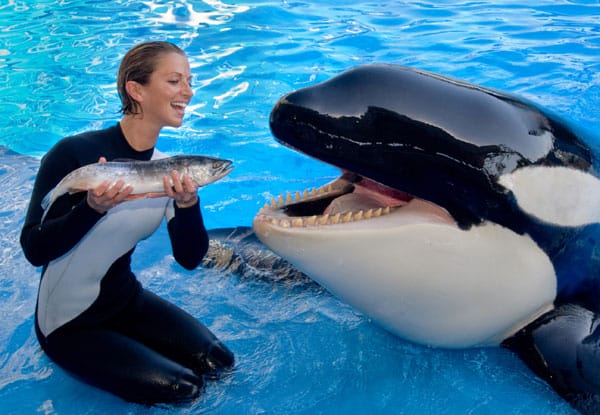Several years ago, this author’s family sat discussing Cesar Millan, a man also known as the dog whisperer. (Love of dogs being the great unifier of American families.) Millan had a television show in which he helped owners with their misbehaving dogs. Under the theory that dogs remain true to their past as pack animals, he taught owners to discipline their dogs and establish themselves as top dog. Only then could they shower love on their beloved pooches.
Discipline first, then affection. “I think it’s the same with children,” this author’s father asserted. No one asked if he meant it seriously. An embarrassed silence followed.
If only we had known that using animal training tips on humans has a successful precedent.
Amy Sutherland was in a mostly happy marriage but tried to nag her husband toward being a more perfect spouse. It did not curb the minor annoyances of her marriage – the times he was late, drove too fast, or behaved irritably. They saw a marriage counselor who rejected them as good communicators, so she accepted the speed bumps in her marriage.
Then she began writing a book about exotic animal trainers, the type of people who teach dolphins to jump through hoops. To her delight, as she related in The New York Times, the techniques used to teach “baboons to skateboard” proved to be the perfect way to train her spouse:
“The central lesson I learned from exotic animal trainers is that I should reward behavior I like and ignore behavior I don’t. After all, you don’t get a sea lion to balance a ball on the end of its nose by nagging. The same goes for the American husband.”
Instead of nagging her husband for, say, leaving dirty gym clothes lying around, she feigned ignorance. But when he cleaned it up, she showered him in thanks. Soon the praise had trained away many of his bad habits.
You too can use this basic premise of animal training to get an acquaintance to stop acting melodramatic for attention, your roommates to keep the apartment clean, or a friend to arrive on time. For difficult cases, here are three advanced tips from animal trainers suggested by Sutherland.
Approximations
“You can’t expect a baboon to learn to flip on command in one session,” Sutherland writes. “You first reward a hop, then a bigger hop, then an even bigger hop.” Instead of asking someone to do a complex task, you need to reward them for each small step, or approximation, that leads to the full task. You can’t ignore your roommate until they spontaneously clean the kitchen, but you can praise each time they wash a dish or put food away until the kitchen sparkles.
Incompatible Behavior
Another way to train someone out of a bad habit is to sidestep it completely. Sutherland learned the trick of “incompatible behavior” from a bird trainer who taught cranes to stop landing on his head by teaching them to land on nearby mats:
“Rather than teach the cranes to stop landing on him, the trainer taught the birds something else, a behavior that would make the undesirable behavior impossible. The birds couldn’t alight on the mats and his head simultaneously.
“At home, I came up with incompatible behaviors for Scott to keep him from crowding me while I cooked. To lure him away from the stove, I piled up parsley for him to chop or cheese for him to grate at the other end of the kitchen island. Or I’d set out a bowl of chips and salsa across the room. Soon I’d done it: no more Scott hovering around me while I cooked.”
Least reinforcing syndrome
As anyone who has dealt with toddlers can relate, sometimes any reaction, positive or negative, is exactly what a misbehaving child craves. The idea of least reinforcing syndrome is to not respond to a negative behaviour at all, since any reaction may fuel the bad habit. A dolphin trainer avoids a misbehaving dolphin and goes on with his or her work, just as you should have no reaction to a habitual outburst of complaint from a friend.
Often if you’re trying to use a psychological trick on your friends or family, you don’t want them to know. That’s not the case with animal training techniques and, as trainers report animals learning to use the techniques on their trainers, may be impossible.
That’s a good thing. The animal trainer motto, Sutherland writes, is that “It’s never the animal’s fault.” You may not be using good training techniques, or have too high expectations. Or, in the human case, you may need some training too.
This post was written by Alex Mayyasi. Follow him on Twitter here or Google Plus. To get occasional notifications when we write blog posts, sign up for our email list.




